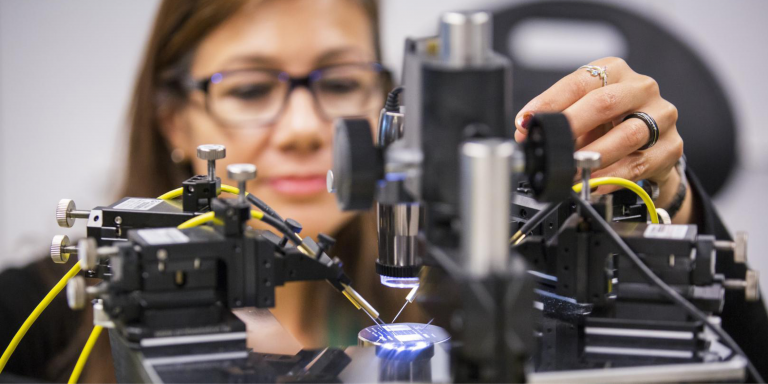
Thought-controlled robotics has seen some very important innovations in recent years, particularly in the medical field. A team from the University of Technology Sydney (UTS) led by Prof. Francesca Iacopi explored the use of epitaxial graphene (EG) grown on silicon carbide on silicon substrate to detect EEG signals with high sensitivity, with the aim of developing a new carbon-based biosensor. The study was published in Journal of Neural Engineering under the title “Non-invasive skin sensors for brain-machine interfaces with epitaxial graphene.”
A brain-machine interface is a direct link between the brain and a computer. Electroencephalogram (EEG) electrodes are particularly interesting to collect neural signals in a non-invasive way in order to interpret human intentions and to translate them, for example, into commands directed to electronic robots.
A more efficient graphene-based biosensor
The researchers designed a new dry EEG electrode using epitaxial graphene grown on silicon carbide on silicon substrates for brain-machine interfaces. The graphene electrodes exhibit improved electrochemical properties compared to commercial dry EEG electrodes, in particular exceptional reliability.
Epitaxial few-layer graphene (EG) grown on silicon carbide on silicon substrates could become a material of choice for EEG electrodes that can operate with high reliability in external environments. The use of silicon carbide on silicon substrates brings the additional advantage that silicon can be made flexible by thinning it below 50 µm in thickness, which would be impossible with silicon carbide substrates.
Other graphene-based sensors have been designed, the study found that the UTS one was superior in robustness, allowing for prolonged and repeated use even in a highly saline environment. Professor Francesca Iacopi explains:
” We were able to combine the best of graphene, which is biocompatible and highly conductive, with the best of silicon technology. We obtain a biosensor that is very resistant and robust to use. “
In addition, the sensor demonstrated a considerable reduction in skin contact resistance, preventing the detection of electrical signals from the brain. Francesca Iacopi adds:
” With our sensor, the contact resistance improves when the sensor rests on the skin. Over time, we have been able to reduce the initial contact resistance by more than 75%. “
Huge potential
Improving brain-machine interfaces for the development of brain-controlled hands-free devices was one of the goals of this research, which received $1.2 million in funding from the Defense Innovation Hub. But the scope of application of this technology is much broader: industry, defense…
Translated from Une équipe de L’Université Technologique de Sydney améliore les interfaces cerveau-machine grâce à un biocapteur à base de carbone









